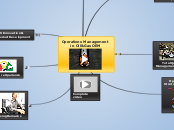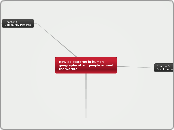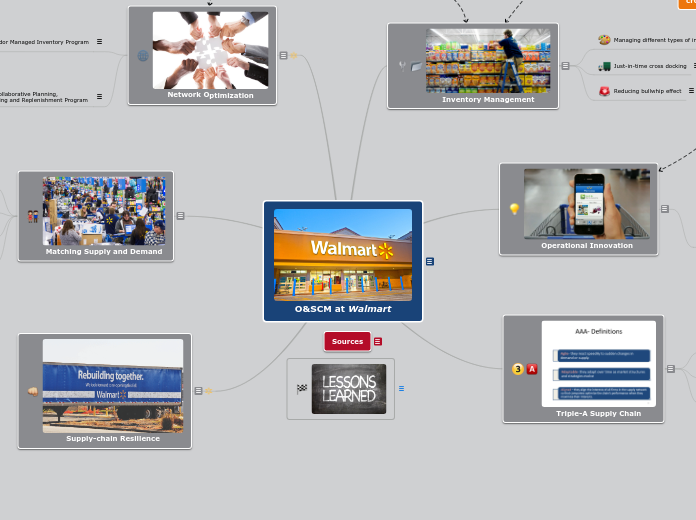Management
Comments
Complete video
Operations Management
in Oil&Gas OEM
Welcome class to my mind map about Operations Management at PV Fluid Products, the company I work for.
PV Fluid Products is a dynamic, privately owned company that specializes in the design, manufacture, supply and support of progressing cavity (pc) power sections used in downhole, horizontal and directional drilling in the Oil and Gas industry.
For a quick intro of what PV Fluid Products does, please watch the short video (1'25") or if you have the time and would like to see our complete manufacturing process you can watch the complete floating video (10'45")
Enjoy the journey!!!!!!
Closing Remarks
Not much to add here, what the video to discover how PV is preparing for the future and how Operations Management will be a key component of our success!!!
I hope yo'all have enjoyed the Journey. Will see you again after our summer break
Customer eXperience
Besides our top quality products, customer service is what sets us apart from the competitors. It is one of of competitive advantages as expressed yer on year by our customers in the annual customer satisfaction survey. This is probably the most valuable strength of the company and PV keeps working diligently in transforming that great customer service into an awesome customer experience. As explain by our managers, PV has taking several steps to work on this front: buffing up the sales team with more personnel and an additional wing of application engineers (I'm one of them :)) who are capable of interact with the customer at another level.
Attached a link to a great article showing the differences between customer service and customer eXperience.
OPS Innovation &
New Product Development
When it comes to New Product development, PV inclines to use a Time To Perfection strategy. The nature of the product PV manufactures does not leave much room for subsequent fixes once the product is out in the market. However, given the recent market competitor pressure, PV has evolving an getting its feet wet with Time To Market strategy to not stay behind the competition. However, PV is doing it in a smart way and it is asking its key customers that have access to the latest developed products to sign an NDA to avoid duplication of our designs by our competitors.
But there is still room for improvement. PV still needs to work to reduce the conceptualization time span and work the intricate details of the flexible time before products get launched to market. Attached a link with some very applicable tips on how to improve Time to Market of new product development.
Supply Chain
Management
Unfortunately our Supply Chain Manager was on vacation, but we got some insight into supplier relation ship management and inventory management from our Operations Manager and VP. This is a key position and division of the company due to the inherit tendency of our company to heavily rely on raw materials to be able to manufacture for our customers and how volatile and vulnerable the oil and gas industry is (oil is a commodity).
Attached a link to a very interesting article with some great tips for improvement in SCM, but I really like the first one, because it is so applicable to PV, "get rid of Excel sheet to do purchasing planning". There is hundreds of affordable software packages that can do the job and will provide greater efficiency.
Inventory Mgmt
Given the nature of the business and the high demand, inventory at PV is kept to a minimum. You could even say that PV operates closely to Dell, we start building your product after the order is in. Now on the supplier side (raw materials inventory), PV does a good job at forecasting material a couple of months in advanced, but even with this, with the recent sudden ramp up in activity, PV has fallen short.
Attached a link with tips on how to mange the most common issued experience in inventory handling.
Suplier relationship mgmt
PV has a limited number of suppliers do to the rigorous process to be an approved supplier. However, PV holds excellent relationships will all of them. But in times of high demand, like right now, the company is hurt, because it does not have a broader selection of providers to go to. The question has always being, should PV lower its standards to allow more providers to be approved? or should the company keep the high standards and service less customers but with the accustomed top quality products? Given PV's managements philosophy and vision, the second option has always being the choice.
Opportunity of improvement:
An opportunity of improvement would be finding a middle ground between the above two postures and create balance. Not an easy task though. Attached on the link a couple of tips to start this process.
Operations &
Strategy Alignment
Being a small company, PV's corporate strategy is narrow and tight to all the divisions of the company. PV's vision is to provide customer with top quality products with the best customer experience. Operations role in this part of the strategy is to guarantee top quality products with measurable KPI through the production line process and time flow management to comply with the customer expected lead times.
Opportunity for improvement:
The link attached has some great tips for operations professionals such as, maintaining useful metrics and an analytical mindset,
staying on top of trends in equipment and engineering, and
implementing a continuous improvement Philosophy. PV is already catching the drift with these concepts, but where I think PV's OM could certainly benefit is from developing a closer relationship with customers to implement a more accurate and adaptable forecasting method. This would allow operations to do a better job at planning leading to reduced lead times.
Total Quality
Management System
PV Fluid Products is certified ISO 9001 ver. 2008. The picture attached is from the day the certification was granted a couple of years ago.
The link attached talks about an interesting debatable topic where ISO is considered a Quality Management System but not a "Total" Quality Management System. The article mentions that in order to be considered a TQMS the quality management system must be linked to a continuous improvement program such as lean operations or six sigma.
Opportunity of improvement:
I could not really tell how accurate this article is, but in a sense they hit the nail on the head when it comes to PV. PV has a great handle on procedures and document tracking and organization but it lacks in continuous improvement processes that can measure accurate metrics and act on them. So if we consider the article to be accurate we could say that PV has a QMS in plkace but not a TQMS...yet!!!!
Management Comments
Lean Operations
PV has been introduced to the concept of Lean manufacturing and although it has not been fully implemented, a couple of tools have been adopted and used successfully. Tools like 5S, Poka Yoke and even Kaizen have been implemented (See examples in subtopics).
However as Expressed by management in the closing remarks, the company plans to hire an outside consulting firm to lead the lean manufacturing change. Hopefully, this consulting firm is good enough that it will not bring just lean manufacturing but it would bring lean thinking so lean can be applied to all the different divisions of the company and not just to the manufacturing production line. Attached a link with some tips for lean operations.
Poka Yoke
Poka-yoke is a Japanese term that means "mistake-proofing" or “inadvertent error prevention”. The key word in the second translation, often omitted, is "inadvertent". A poka-yoke is any mechanism in a lean manufacturing process that helps an equipment operator avoid (yokeru) mistakes (poka). Its purpose is to eliminate product defects by preventing, correcting, or drawing attention to human errors as they occur. The concept was formalised, and the term adopted, by Shigeo Shingo as part of the Toyota Production System.
Attached a picture of a system at PV QC final station that uses the concept of Poka Yoke also commonly known as "mistake-proofing". Operators must measure stators using a vector gauge (long instrument in the bottom of the pic) but extension pads must be attached to them so the rings on the top of the picture are calibration rings that they must use after installing the extension pads to verify that the pads used are the correct ones.
5S
5S is the name of a workplace organization method that uses a list of five Japanese words: seiri, seiton, seiso, seiketsu, and shitsuke.
Translated into Roman Script, they all start with the letter "S".
The list describes how to organize a work space for efficiency and effectiveness by identifying and storing the items used, maintaining the area and items, and sustaining the new order. The decision-making process usually comes from a dialogue about standardization, which builds understanding among employees of how they should do the work.
The picture attached is an example from PV's production line of how tool were organized before and after applying 5S methodology.
Kaizen
Kaizen (改善), is the Japanese word for "continual improvement ". In business, kaizen refers to activities that continuously improve all functions and involve all employees from the CEO to the assembly line workers.
PV once in a while will schedule kaizen meeting when needing to focus in the solution of a specific problem. This has been done in operations and other areas as well.









